How Cartoons Reflect Society’s Values: When we think of cartoons, what often comes to mind are playful characters, bright colors, and entertaining storylines meant to delight children. Beneath their seemingly simplistic surface, however, cartoons have long served as cultural mirrors, reflecting and shaping the societal values of their times. From early black-and-white shorts that embodied the optimism (and biases) of the early 20th century to modern digitally animated series that tackle hot-button social issues, animation is far more than just amusement for kids. It’s a medium that, intentionally or not, encodes the morals, ideas, and concerns of the eras in which they’re produced.
In this comprehensive, we’ll explore how cartoons reflect society’s values, tracing a historical arc from vintage classics to contemporary hits, and examining everything from evolving cultural norms and moral lessons to representation and social commentary. Drawing on decades of animation history—as well as personal anecdotes from my own experiences at Toons Mag—I’ll unpack the deeper ways in which these colorful, imaginative stories speak volumes about who we are and what we believe.
By the end of this journey, you’ll see how animation—far from being a mere pastime—reveals, challenges, and ultimately helps shape the values and ideals of each new generation.
1. Introduction: Cartoons as Cultural Mirrors
Cartoons often simplify reality: animals talk, characters endure slapstick violence without injury, and problems resolve in a matter of minutes. But this very simplification can magnify societal values and issues, making them more visible. When a character upholds virtue, faces moral dilemmas, or navigates prejudice, we get a distilled view of society’s moral code and cultural anxieties.
From the earliest silent shorts—where comedic characters inadvertently mirrored the optimism (and bigotries) of the day—to modern streaming series that directly tackle issues like racism, mental health, and identity, cartoons provide insight into how we see ourselves and wish to be seen. They can affirm what society deems valuable, question cultural assumptions, or even push for change.
Key Insight: Cartoons are simultaneously a product and a driver of societal values. They reflect prevailing norms while also influencing future perspectives, especially among younger viewers. This two-way conversation between animation and culture is at the heart of why cartoons matter well beyond childhood entertainment.
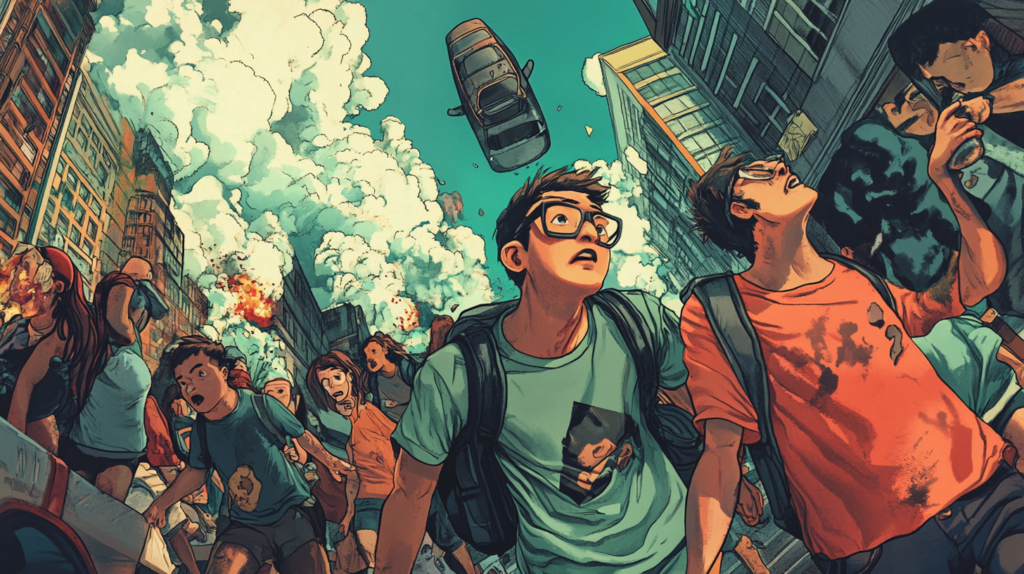
2. A Brief History of Cartoons in Society
Early 20th Century: Pioneers and Shaping Attitudes
Long before Mickey Mouse became a global icon, early animators like Winsor McCay and the Fleischer Brothers produced experimental shorts that tested the boundaries of what was possible in motion pictures. While the primary goal was novelty—showing audiences the magic of moving drawings—these shorts often included comedic gags and caricatures that both reflected and reinforced the cultural outlook of the time. Many black-and-white cartoons included casual stereotypes or comedic references to class and ethnicity that would later be deemed offensive.
Golden Age (1930s–1950s): Optimism, Morals, and Wartime
When color and synchronized sound emerged, big studios like Walt Disney and Warner Bros. launched the Golden Age of animation. Characters like Mickey Mouse, Bugs Bunny, and Tom and Jerry became household names, reflecting a society that craved lighthearted escapism during the Great Depression and World War II. Yet, these cartoons also contained racial stereotypes and wartime propaganda, revealing a society that was, on one hand, valuing patriotism and humor, and on the other, perpetuating discrimination and simplified “us versus them” narratives.
Television Era (1950s–1980s): Family, Conformity, and Early Rebellion
As television became dominant, cartoons evolved to fit the medium’s smaller budgets and weekly scheduling demands. Hanna-Barbera introduced cost-effective, limited animation for shows like The Flintstones and Yogi Bear, often reflecting suburban family life and social norms of the day. Yet subversive elements crept in: The Jetsons imagined a future shaped by contemporary optimism about technology, while Scooby-Doo recast teenage independence and curiosity in a comedic, “mystery-solving” mold.
Renaissance and Beyond (1980s–Present)
The late 1980s saw a Disney Renaissance (The Little Mermaid, Beauty and the Beast) embracing more mature themes and innovative storytelling. Meanwhile, prime-time adult cartoons like The Simpsons (1989–present) provided scathing social satire, bridging comedic irreverence with real societal critiques. Over the decades, cartoons diversified in style, content, and distribution (e.g., streaming platforms, web shorts), expanding far beyond the strictly “child-friendly” domain.
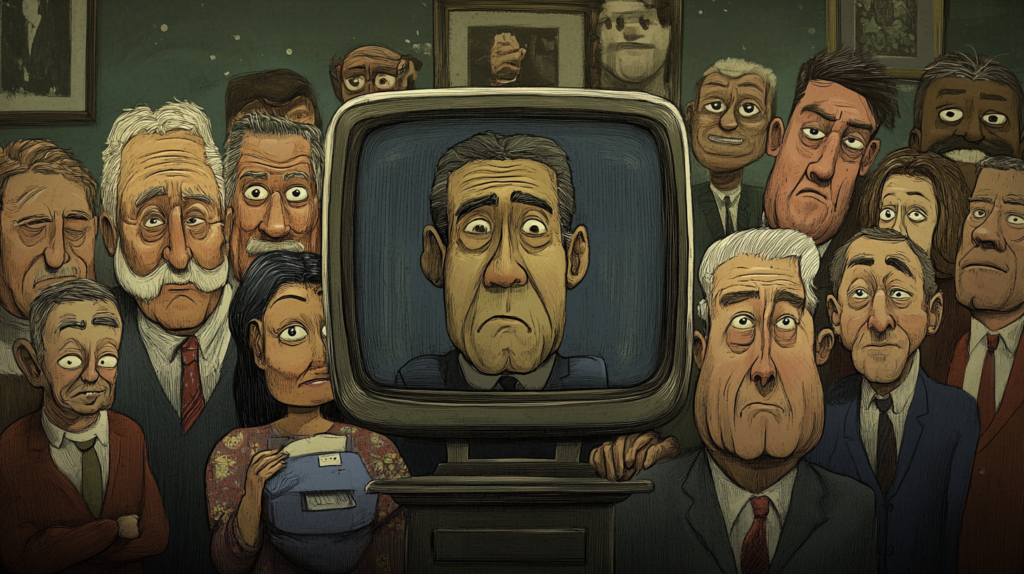
3. The Moral Dimension: Lessons Hidden in Entertainment
Teaching Right from Wrong
From old-school fairy-tale adaptations to modern superhero cartoons, a consistent thread is the moral lesson embedded in the narrative. Villains are foiled by heroes who demonstrate virtues like courage, kindness, and honesty—values a society seeks to pass onto children. Think of the moral tags at the end of He-Man episodes in the 1980s, where Prince Adam explicitly spelled out the day’s moral.
Simplification of Complex Ethical Dilemmas
Cartoons often distill complicated moral and ethical questions (justice, loyalty, sacrifice) into digestible stories. While some older shows presented clear-cut good vs. evil scenarios, contemporary cartoons might delve into “shades of gray,” reflecting society’s growing acceptance of complexity. For instance, Steven Universe explores empathy, identity, and conflict resolution in nuanced ways that mirror modern discourses around emotional intelligence.
4. Evolving Social Norms and Stereotypes
From Offensive Caricatures to Changing Standards
Earlier cartoons, particularly from the 1930s to 1950s, frequently depicted racial and cultural stereotypes that modern viewers find disturbing. Characters wearing blackface or portraying certain ethnicities in comedic, demeaning ways were not uncommon. These images reveal a society that accepted casual racism and xenophobia as humor. Over time, condemnation of such portrayals and calls for removal or re-contextualization in streaming releases reflect a shift in societal values, aiming for greater respect and inclusivity.
The Rise of Self-Awareness
As society recognized the harm of bigoted portrayals, animation studios responded. Looney Tunes episodes with racist content were pulled from circulation or re-released with disclaimers, acknowledging the era’s prejudices. Modern creators actively strive to avoid repeating harmful tropes, showcasing an industry more aware of cultural sensitivities.
5. Gender Roles and Representation
Classic Archetypes: Princesses and Heroes
For decades, Disney princesses epitomized traditional feminine ideals—beauty, passivity, waiting for rescue. Simultaneously, male heroes exhibited bravery, emotional restraint, and leadership. These portrayals reinforced patriarchal norms that prevailed in mid-20th-century Western society.
Shifts Toward Equality and Complexity
As feminist movements gained momentum, cartoons began introducing stronger, more autonomous female characters—Mulan, Merida, and more recently, Moana or Elsa, signifying a broader cultural shift toward valuing female agency. Likewise, male characters in contemporary shows often display vulnerability or collaborative leadership, reflecting progressive social attitudes about gender roles.
Beyond the Binary
In the current era, some cartoons explore gender fluidity or non-traditional identities, mirroring broader societal discourses. Shows like She-Ra and the Princesses of Power incorporate LGBTQ+ characters, while others break free of binary stereotypes altogether, reflecting an evolving understanding of gender in modern culture.

6. Race, Ethnicity, and Cultural Depictions
From Token Characters to Genuine Representation
Cartoons produced in the 20th century often featured token minority characters to “tick a box,” frequently layering them with stereotypes. As society’s push for authentic representation grew, so did the complexities of these roles. Modern cartoons strive for multi-dimensional characters from diverse backgrounds—The Proud Family (Disney), Craig of the Creek (Cartoon Network), or Kipo and the Age of Wonderbeasts (Netflix) illustrate genuine attempts at cultural inclusivity.
The Debate over Cultural Appropriation
Amid these efforts, controversies over appropriation persist. Some creators face criticism for using cultural settings or aesthetics without proper research or consultation, inadvertently perpetuating clichés. The dialogue around these issues parallels broader societal debates on cultural ownership, historical injustices, and respect for heritage.
7. Technology, Innovation, and Society’s Shifts
Symbolizing Societal Hopes and Fears
Cartoons frequently incorporate futuristic or fantastical technology. During the Space Race era, shows like The Jetsons channeled optimism about rocket-powered vehicles and robot maids. Conversely, more contemporary series might depict AI or surveillance with an undertone of caution, reflecting modern anxieties about tech overreach and privacy.
Evolving Storytelling Techniques
Improvements in animation technology—from early stop-motion to CGI wonders—mirror society’s appetite for rapid innovation. The shift to digital production also democratizes animation, allowing creators from diverse backgrounds to produce content independently (via YouTube, webtoons, etc.). This technological democratization is itself a reflection of the value society places on creativity, entrepreneurial spirit, and inclusion of new voices.
8. Cartoon Propaganda and Wartime Influences
WWII and Government-Sponsored Cartoons
During World War II, studios like Disney and Warner Bros. produced propaganda shorts—featuring beloved characters lampooning Axis powers or encouraging citizens to buy war bonds. These cartoons highlight society’s mobilization for war, using comedic or heroic messaging to boost morale. Yet they also reveal the era’s biases, sometimes employing caricatures of enemies as less than human.
Cold War and National Identity
In the post-war decades, some cartoons subtly promoted patriotism and capitalism over communism, reflecting a society shaped by Cold War tensions. Studios that received government sponsorship or partnered with agencies occasionally infused narratives with nationalistic undertones. Their existence underscores how animation can serve as a vehicle for political persuasion, shaping collective viewpoints under the guise of entertainment.
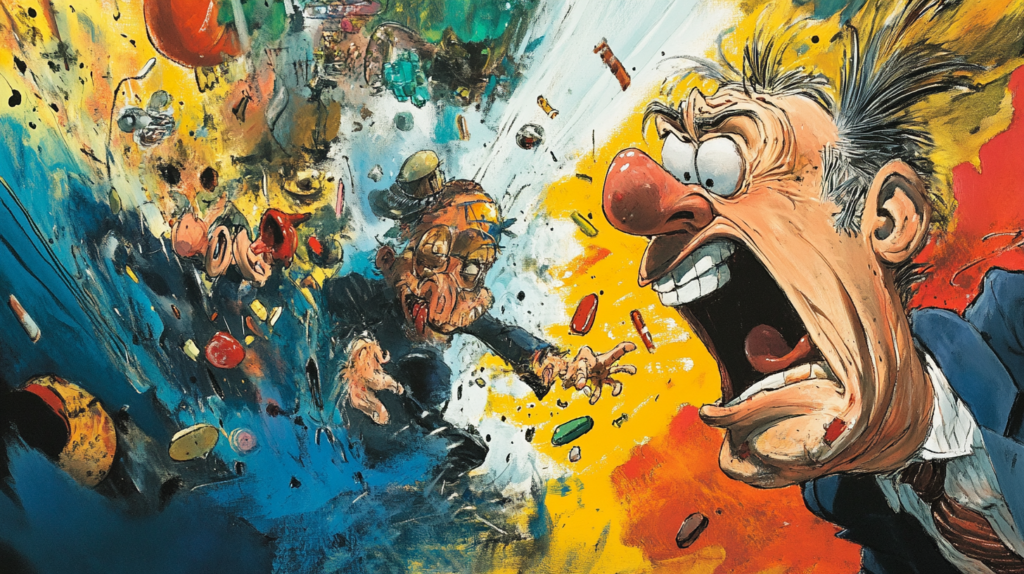
9. Satire, Political Commentary, and Social Critique
Prime-Time Breakthroughs: The Simpsons and Beyond
With the advent of prime-time cartoons for adult audiences—The Simpsons (1989–present), South Park (1997–present)—animation took on overt sociopolitical critique. These shows lampoon public figures, ridicule governmental policies, and dissect cultural phenomena. Through humor, they comment on everything from religious hypocrisy to consumerism, reflecting a society increasingly comfortable with irreverent self-examination.
Subversive Wit in Children’s Cartoons
Even “family-friendly” cartoons occasionally embed pointed social commentaries. Adventure Time or Avatar: The Last Airbender, for instance, weave in critiques of authoritarian rule, environmental devastation, or moral ambiguity. Such layered storytelling exemplifies a culture that acknowledges children’s capacity to handle more complex themes, fostering early awareness of societal issues.
10. Globalization: Cartoons Crossing Borders and Cultures
Anime and the Global Landscape
Japanese anime soared in Western markets during the 1990s, broadening tastes for different art styles and complex narratives. From Pokémon mania to deeper shows like Neon Genesis Evangelion, Western audiences were exposed to different cultural norms—rituals, honor codes, or communal values—reflected in these imported cartoons.
Cultural Exchange and Co-Productions
As distribution platforms globalize, co-productions between studios in different continents have become more common. Series like Miraculous: Tales of Ladybug & Cat Noir (a French-Korean collaboration) incorporate multi-cultural settings and values, forging a sense of global community. This synergy fosters cultural understanding but can also spark debates over creative control and national identity within animated stories.
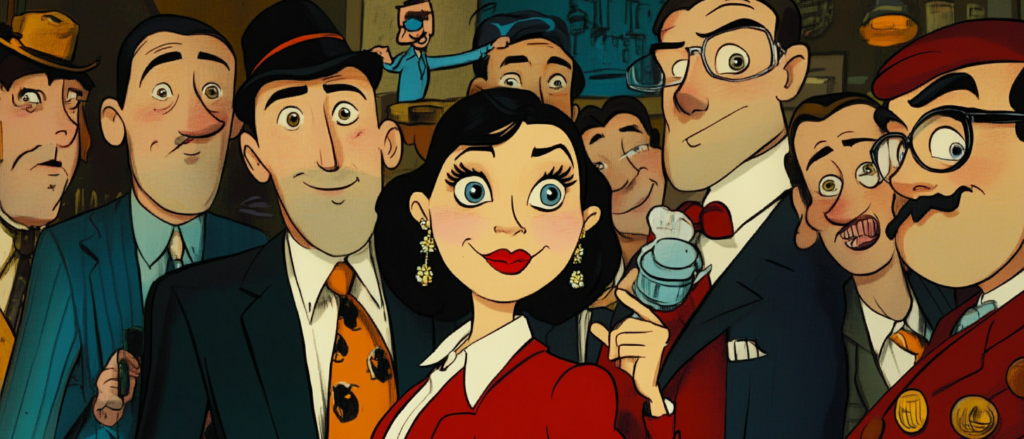
11. Controversies, Censorship, and Societal Backlash
Parental and Political Pressures
Cartoons perceived as straying from mainstream values often provoke backlash. Episodes that hint at homosexuality, question religious norms, or depict violence can trigger protest campaigns or calls for boycotts. In certain countries, censors require editing out specific content—like same-sex affection or overt political criticism—to comply with local moral codes.
Redefining “Children’s Content”
While older cartoons might feature comedic racism or sexism considered acceptable at the time, modern audiences condemn such portrayals. Some streaming services add disclaimers or remove episodes entirely. This response underscores how society’s evolving moral compass directly impacts which cartoons remain accessible, and in what form.
12. Impact on Individual and Collective Identity
Socialization and Childhood Development
For many children, cartoons represent an early influence on how they perceive relationships, conflict resolution, and identity. Repetitive viewing of certain tropes—princesses waiting for rescue, comedic sidekicks who exist only to serve the protagonist—subtly shapes kids’ expectations of gender roles and social structures.
Generation-Defining Icons
Certain cartoons transcend mere shows to become generational touchstones. Looney Tunes, Scooby-Doo, SpongeBob SquarePants, and many others define the comedic or moral sensibilities of entire cohorts. Revisiting these cartoons as adults reveals how deeply they embed social norms—like the importance of humor, teamwork, or consumer culture.
13. Personal Reflections: My Encounters with Cartoons’ Societal Echoes
Growing up, I was enthralled by 90s cartoons—The Powerpuff Girls, Hey Arnold!, and Batman: The Animated Series—all very different in style and tone. But in each, I found reflections of societal values:
- The Powerpuff Girls: Showed that even young (super) girls could lead, fight villains, and remain kind, challenging the typical “boys as heroes” archetype.
- Hey Arnold!: Focused on community life, empathy, and the complexities of inner-city families, mirroring broader social empathy emerging in the late 90s.
- Batman: The Animated Series: Explored moral dilemmas, corruption, and justice, resonating with a society grappling with rising crime narratives.
As I pursued writing for Toons Mag, I came to see how animation historians parse each show’s references to class, race, technology, or religion. Interviews with modern animators revealed a conscious effort to correct past missteps—e.g., avoiding harmful stereotypes, balancing comedic tone with inclusivity. Thus, personal experiences taught me that cartoons aren’t just childhood amusements; they’re windows into the hopes, fears, and ethics of the societies that produce them.
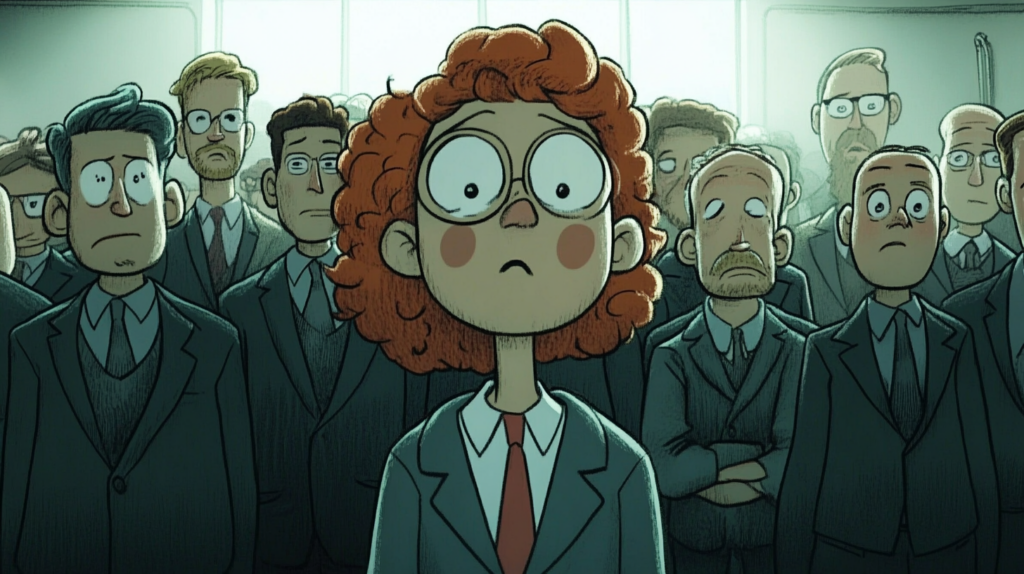
14. Contemporary Trends: Diversity, Inclusivity, and Modern Values
Fostering Representation
Many newer cartoons prioritize a broad array of characters, reflecting varying ethnicities, family structures, and sexual orientations. Shows like Steven Universe famously introduced non-binary or genderfluid characters, normalizing them for young audiences. This push for inclusivity aligns with 21st-century movements for social justice, demonstrating how cartoons can champion progressive ideals.
Environmental and Social Consciousness
We also see a rising wave of eco-friendly and socially conscious themes. Cartoons might revolve around climate crises, or focus on cooperative problem-solving that acknowledges multicultural contexts. For example, Kipo and the Age of Wonderbeasts merges sci-fi fantasy with nuanced diversity, celebrating acceptance across species and cultures—mirroring real-world calls for unity amid adversity.
Creator Control and Independent Animation
The accessibility of digital tools has birthed a wealth of independent web-based animations. Freed from the constraints of major studios, creators can experiment with bold narratives, addressing hot-button issues like mental health (BoJack Horseman, while adult-oriented, redefined how cartoons tackle depression) or complex cultural identities. This flourishing creativity exemplifies society’s appetite for authenticity and a break from sanitized, corporate narratives.
15. How Cartoons Reflect Society’s Values: The Ongoing Conversation Between Cartoons and Society
Cartoons are no longer confined to Saturday morning TV blocks or child-centric streaming categories. They flourish in myriad forms and appeal to audiences across age groups, bridging comedic escapism with incisive social commentary. Tracing their evolution from black-and-white comedic shorts to globally streamed, genre-blending epics reveals how deeply intertwined cartoons are with our shifting cultural, moral, and political landscape.
Why does it matter? Because animation is often our earliest teacher and ongoing companion in shaping worldview—nudging us to empathize with talking animals, champion justice and compassion, and question norms we might otherwise take for granted. Cartoons embed moral lessons, reflect progress in diversity, address controversies head-on, and remain uniquely positioned to spark cultural conversations. Ultimately, they serve as living records of societal values, capturing the spirit of each era in lines, color, and humor.
Even as times change and we reconsider what’s acceptable or laudable, cartoons adapt. They challenge or affirm our collective beliefs, bridging generations through shared memories and ongoing reinterpretations. The next time you watch an animated series—whether it’s a beloved childhood favorite or a new, edgy indie short—look beyond the jokes or spectacle. You’ll likely find echoes of the values, debates, and aspirations that define our modern world, along with hints of what future generations may cherish or critique.



